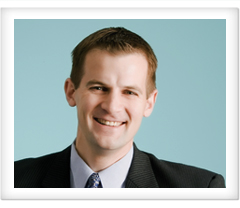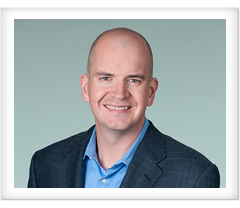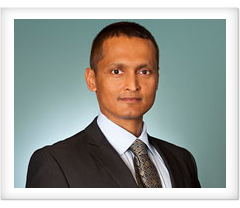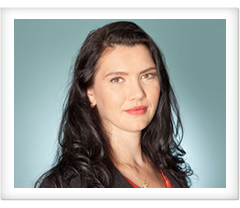| |
 Alerts & Advisories Alerts & Advisories
 Industry Reports & Newsletters Industry Reports & Newsletters
 Published Articles Published Articles
 Social Media & Blogs Social Media & Blogs
 Brochures Brochures

|
 |
Intellectual Property Alert
USPTO Issues Interim Guidance on Patent Eligibility Under §101:
Framework for Considering Whether Patents Are Eligible for US Patent Protection Significantly Improved
12.17.2014
By Michael Van Loy, Carl Kukkonen, Shovon Ashraf, and Inna Dahlin
The United States Patent and Trademark Office (USPTO) has issued revised guidance to its examiners relating to determination of patent eligibility under 35 U.S.C. §101. This “Interim Guidance” provides more specific advice for use in evaluating claims directed to any technical field, but is of particular relevance to patent applications relating to software, business methods, and “nature-based” technologies. The previously issued guidelines relating to these subjects had resulted in a great deal of uncertainty about the appropriate standard for examination of pending patent applications. While no bright line rule yet exists, the newly issued Interim Guidance does provide a significantly improved framework for consideration of issues related to patent eligibility.
Patent eligibility, specifically, what types of subject matter should be eligible for patent protection in the United States, has been the focus of heightened attention of late. The requirements for receiving patent protection in the United States are set forth in 35 U.S.C. §§101, 102, 103, and 112, which respectively address patent eligibility, novelty, inventiveness (e.g., non-obviousness), and disclosure and other formal requirements (e.g., enablement, written description, and clarity/definiteness). The patent eligibility requirements of 35 U.S.C. §101 had been viewed for many years as a relatively low hurdle for a patent application to overcome. However, a number of more recent Supreme Court decisions, beginning with Bilski (Bilski v. Kappos, 561 U.S. 593 (2010)) and followed by Myriad (Association for Molecular Pathology v. Myriad Genetics, Inc., 133 S. Ct. 2107 (2013)), Mayo (Mayo v. Prometheus, 132 S. Ct. 1289 (2012)) and Alice (Alice Corp. Pty. Ltd. v. CLS Bank Int’l, 134 S. Ct. 2347 (2014)), have defined the proper analysis under §101 as a threshold issue that requires substantive analysis. The shifting approaches to determining subject matter eligibility stem at least in part from concerns about patent claims that seek to broadly cover certain fundamental concepts (e.g., laws of nature, natural phenomena, or abstract ideas) in a manner that potentially preempts the application of such concepts in any field.
In 2014, the USPTO has issued to its examination corps three sets of examination instructions relating to patent eligibility under §101. First, on March 4, 2014, the USPTO issued a “Procedure For Subject Matter Eligibility Analysis Of Claims Reciting Or Involving Laws Of Nature/Natural Principles, Natural Phenomena, And/Or Natural Products” (the “Myriad-Mayo Guidance”). Following Alice, the USPTO issued “Preliminary Examination Instructions in view of the Supreme Court decision in Alice Corp.” (the “Alice Guidance”) on June 25, 2014. Earlier this week, on December 16, 2014, the USPTO issued new Guidance on Patent Subject Matter Eligibility (the “Interim Guidance”) that supplements the Alice Guidance and supersedes the Myriad-Mayo Guidance.
The Interim Guidance is intended to provide “consistency across all technologies” and will be used by USPTO Examiners in determining whether claims are directed to patent eligible subject matter. This inquiry is relevant to inventions in all fields, but has had the greatest impact on patent applications relating to computer-implemented inventions (e.g., software, business methods, etc.) and “nature-based” inventions. The expected impacts of these changes are discussed below.
The Interim Guidance provides a basic flowchart for guiding the inquiry regarding patent eligibility. The examiner must first determine whether a claim is directed to one of the statutory categories of patent-eligible subject matter (e.g., process, machine, manufacture, or composition of matter). If a claim passes this initial test, the two-part test first set forth in Mayo and held by the Supreme Court in Alice to be applicable to claims directed to any type of subject matter is then applied.
As outlined in the Alice Guidance and reiterated in the Interim Guidance, the two-part test instructs examiners to first determine whether the claim, as a whole, is directed to at least one of several judicial exceptions, which include laws of nature, natural phenomena, and abstract ideas. Non-limiting examples of abstract ideas include fundamental economic practices, certain methods of organizing human activities, an “idea of itself,” and mathematical relationships or formulas. If the examiner determines that the claim is directed to one of the judicial exceptions, the second part of the two-part test requires determining whether any element, or combination of elements, in the claim is sufficient to ensure that the claim, as a whole, amounts to significantly more than the judicial exception.
While the basic framework for this analysis as it relates to software, business methods, and other similar technologies remains unchanged in the Interim Guidance relative to the Alice guidance, the Interim Guidance goes significantly further than the Alice guidance did in providing concrete criteria and illustrative examples to assist examiners in reviewing and assessing subject matter eligibility. These improvements are a result of both public comments and the holdings of a number of recent cases decided by the U.S. Court of Appeals for the Federal Circuit.
The Alice Guidance presented a significant challenge for examiners due to the lack of substantive examples of what constitutes or does not constitute the “significantly more” than an abstract idea that is required by the second inquiry of the two-part test to render a claim directed to an abstract idea patent eligible. For example, the Alice Guidance noted only that limitations that may be enough to qualify as “significantly more” when recited in a claim with an abstract idea include, as non-limiting or non- exclusive examples, improvements to another technology or technical field, improvements to the functioning of the computer itself, and meaningful limitations beyond generally linking the use of an abstract idea to a particular technological environment, and further noted that limitations that are not enough to qualify as “significantly more” when recited in a claim with an abstract idea include, as non-limiting or non-exclusive examples, adding the words “apply it” (or an equivalent) with an abstract idea, or mere instructions to implement an abstract idea on a computer, and requiring no more than a generic computer to perform generic computer functions that are well-understood, routine and conventional activities previously known to the industry.
Unfortunately, these criteria lacked specificity, and the somewhat murky divide between what may be enough to qualify as the required “significantly more” and what is not enough was quite substantial. In practice, examiners in many art units at the USPTO appeared to default to a finding of patent ineligibility on nearly all claims and to thereby shift the burden of establishing patent eligibility back to patent applicants. Many practitioners reported being unofficially advised by examiners during interviews that it would be wise to delay as much as possible in filing responses to rejections under 35 U.S.C. §101 based on the Alice Guidance in hopes that revised guidelines would be more helpful.
Now that the Interim Guidance has been released, this advice seems prescient. In place of the relatively non-specific criteria in the Alice Guidance, the Interim Guidance provides further examples of claim features that may be enough to qualify as “significantly more” in the second part of the two-part test for claims found to be directed to a judicial exception. For example, features relating to “applying the judicial exception with, or by use of a particular machine; effecting a transformation or reduction of a particular article to a different state or thing; adding a specific limitation other than what is well-understood, routine and conventional in the field, or adding unconventional steps that confine the claim to a particular useful application; or other meaningful limitations beyond generally linking the use of the judicial exception to a particular technological environment” are listed as potentially being sufficient to establish patent eligibility. The Interim Guidance also provides additional examples of claim limitations that are not likely to be enough to qualify as “significantly more,” which include (in addition to those noted in the Alice Guidance) simply appending well-understood, routine and conventional activities previously known to the industry, specified at a high level of generality, to the judicial exception, e.g., a claim to an abstract idea requiring no more than a generic computer to perform generic computer functions that are well-understood, routine and conventional activities previously known to the industry; adding insignificant extrasolution activity to the judicial exception, e.g., mere data gathering in conjunction with a law of nature or abstract idea; and generally linking the use of the judicial exception to a particular technological environment or field of use.
The Interim Guidance also advises that, if a claim includes a plurality of judicial exceptions, each of them should be overweighed by at least one additional limitation that elevates the judicial exception to “significantly more.” It also summarizes a streamlined eligibility analysis of claims whose eligibility is self-evident – i.e., when a claim, viewed as a whole, “clearly does not seek to tie up any judicial exception such that others cannot practice it.” Such claims need not be formally subjected to the second part of the two-part test, thereby allowing examiners to devote more attention to claims that are not as clearly patent eligible.
After the Myriad-Mayo Guidance received overwhelming public criticism and the USPTO itself admitted that it raised several controversial issues while being unnecessarily broad, the Interim Guidance was long-anticipated by practitioners in the biological and pharmaceutical arts. The complicated framework of the Myriad-Mayo Guidance is now replaced by a more straightforward analysis.
According to the Interim Guidance, patent eligibility of a claim including a nature-based product is determined under the same two-part test discussed above. First, an examiner determines whether the claim is directed to “a product of nature” exception (e.g., a law of nature or a naturally occurring phenomenon). This analysis requires comparing the nature-based product in the claim to its naturally occurring counterpart (or a closest naturally occurring counterpart) in its natural state to identify “markedly different” characteristics based on structure, function, and/or properties. Even a small change can render the claimed nature-based product “markedly different.” The Interim Guidance notes that “[c]are should be taken not to overly extend the markedly different characteristics analysis to products that when viewed as a whole are not nature-based” and directs examiners to utilize the streamlined analysis approach discussed above “[f]or claims that recite a nature-based product limitation (which may or may not be a ‘product of nature’ exception) but are directed to inventions that clearly do not seek to tie up any judicial exception. In such cases, it would not be necessary to conduct a markedly different characteristics analysis.”
Just as the Interim Guidance improves on the Alice Guidance regarding patent eligibility of claims directed to abstract ideas, the Interim Guidance also addresses some difficulties identified in public comments regarding the “markedly different” analysis, which was originally introduced in the Mayo-Myriad Guidance. Specifically, the Interim Guidance liberalizes the requirements laid out in the Mayo-Myriad Guidance by specifying that “functional characteristics and other non-structural properties can evidence markedly different characteristics.” In the now superseded Mayo-Myriad Guidance, “only structural changes were sufficient to show a marked difference.” Moreover, the Interim Guidance excludes a process claim from the markedly different analysis for nature-based products used in the process, “except in the limited situation where a process claim is drafted in such a way that there is no difference in substance from a product claim (e.g., ‘a method of providing an apple.’).”
As an example of how this new analysis should be applied, a product that is purified or isolated may be patent eligible when there is a resultant change in characteristics sufficient to show a marked difference from the product’s naturally occurring counterpart. When the nature-based product in the claim has markedly different characteristics and is thus not a “product of nature” judicial exception, the claim can be found patent eligible. Moreover, the Interim Guidance states that “[w]hen the nature-based product is produced by combining multiple components, the markedly different characteristics analysis should be applied to the resultant nature-based combination rather than its component parts.” Thus, a combination of nature-based products may be patent-eligible if it has markedly different characteristics than any naturally occurring counterparts of the combination or the individual components.
Only if no “markedly different” characteristics are found, the analysis proceeds to the second step of determining if the claim recites additional elements that amount to “significantly more” than the judicial exception. The “significantly more” finding is based on what has been termed as an “inventive concept” based on the Supreme Court’s Alice decision, and is performed in the same manner as described above for other judicial exceptions. In rejecting a claim during examination, the Examiner is asked to “identify the exception by referring to where it is recited . . . in the claim and explain why it is considered an exception. Then, if the claim includes additional elements, identify the elements in the rejection and explain why they do not add significantly more to the exception.” Thus, the Interim Guidelines provide that “[i]f there are no meaningful limitations in the claim that transform the exception into a patent-eligible application, such that the claim does not amount to significantly more than the exception itself, the claim is not patent-eligible.”
While the additional examples in the Interim Guidance of limitations that might or might not be enough to qualify as “significantly more” stop well short of providing a bright line test for what is and is not patent eligible, such a bright line rule appears unlikely to be forthcoming from the courts in the near future. Patent practitioners and applicants can take some comfort, however, in the broader base of potential arguments available for rebutting a rejection based on alleged lack of patent eligibility.
With regard to software claims, the statements in the Interim Guidance relating to limitations “adding a specific limitation other than what is well-understood, routine and conventional in the field” or “adding unconventional steps that confine the claim to a particular useful application” being potentially enough to add “significantly more” to an abstract idea or other judicial exception should be quite helpful in many cases.
With regard to the “product of nature” exception, claims including biological or pharmacological functions or activities, for example, would be patent eligible unless the claim is also directed to another judicial exception, such as an abstract idea or a natural phenomenon (e.g., use of a correlation in a diagnostic claim), or a different natural phenomenon. In the latter instance, the eligibility will then turn on whether the claim includes limitations “adding a specific limitation other than what is well-understood, routine and conventional in the field” or “adding unconventional steps that confine the claim to a particular useful application” being potentially enough to add “significantly more” to an abstract idea.
Certainly, the onus remains on practitioners and applicants to present claims that highlight such features and/or that truly add meaningful limitations recited in a manner that does not give the appearance of precluding any way of practicing a concept that is amenable to characterization as one of the judicial exceptions. However, the Interim Guidance provides what appears to be a more workable framework that, if applied properly, can be expected to bring some much-needed balance to analyses of patent eligibility under 35 U.S.C. §101.

If you have any questions about this topic, please contact the author(s) or your principal
Mintz Levin attorney.

|
|

Michael D. Van Loy, PhD, Member

Carl A. Kukkonen III, Member

Shovon Ashraf, PhD, Associate

Inna Dahlin, PhD, Associate

Related Practices

Related Industries

Related Blogs
|
|